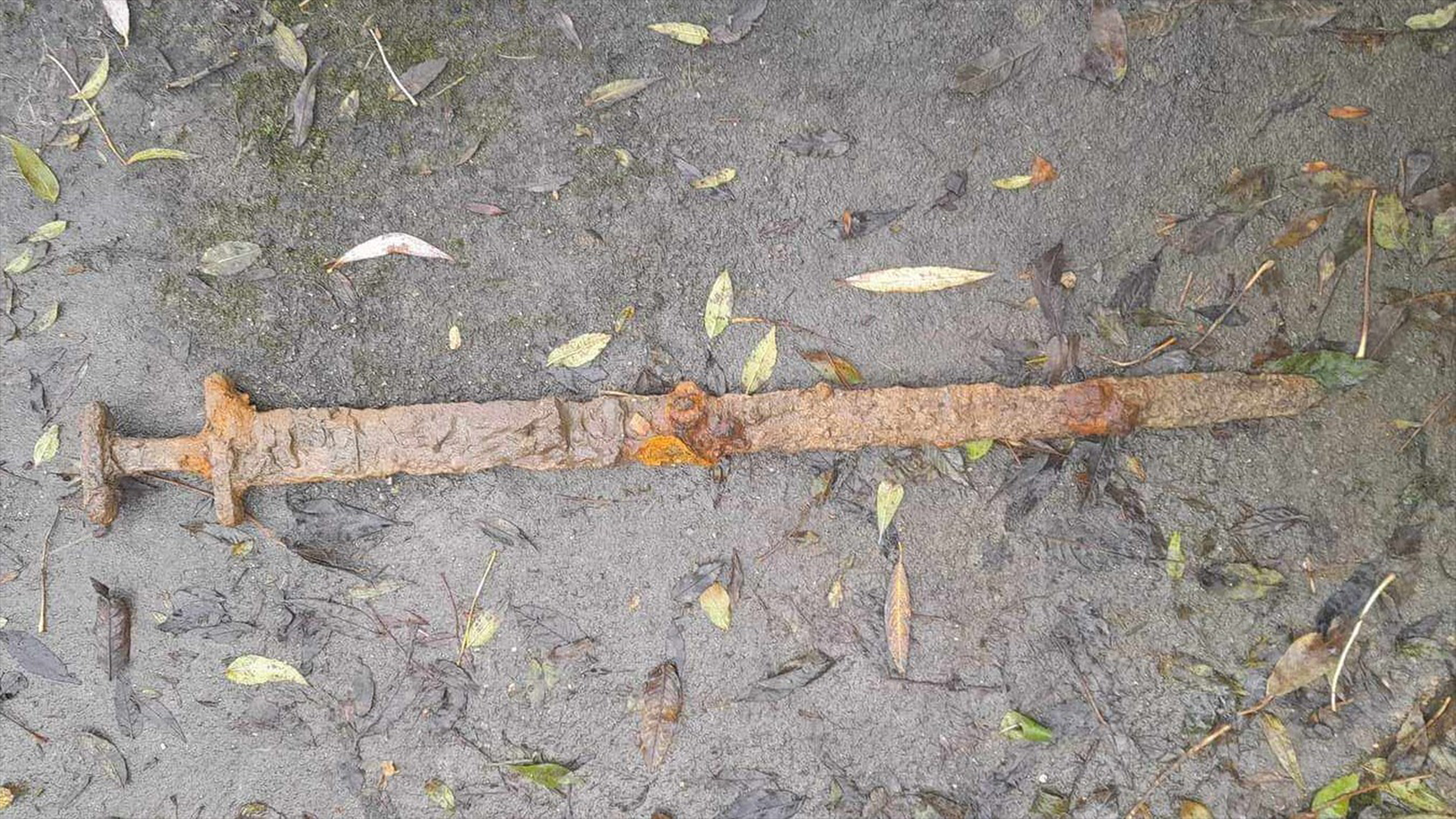1,100-year-old Viking sword pulled from UK river by magnet fisher
Experts have confirmed that a sword pulled from a river in Oxfordshire at the end of last year is an "archaeologically rare" Viking weapon dating to between A.D. 850 and 975.

A corroded sword pulled from an English river by a magnet fisher is a Viking weapon dating to between A.D. 850 and 975, experts have confirmed.
Trevor Penny was searching for lost and discarded objects in the River Cherwell in Oxfordshire in November 2023 when he made the discovery. The magnet fisher had been down on his luck that day and only pulled scaffolding poles from the water, he told Live Science in a message on Facebook. When Penny lugged out the sword, he didn't immediately recognize what it was.
"I was on the side of the bridge and shouted to a friend on the other side of the bridge, 'What is this?'" Penny, who is a member of the Thame Magnet Fishing Facebook group, recalled in the message. "He came running over shouting, 'It looks like a sword!'"
Related: Early medieval sword fished out of Polish river is in 'near perfect' condition
Penny immediately uploaded images of the sword to Google to try to identify it. "Whatever photo angle I tried was coming up with Viking sword," Penny said. The magnet fisher then contacted the Oxfordshire county liaison officer responsible for recording archaeological finds made by the public, and took the sword to be examined by experts.
The sword, only provisionally dated until now, has been authenticated as Viking and estimated to date as far back as 1,200 years ago.

The weapon dates to a period when the Vikings, who were originally pagans from Scandinavia, traveled to the British Isles to plunder, conquer and trade with the ruling Saxons. The Vikings set foot on British soil in the eighth century, having raided a monastery on Lindisfarne, an island off Britain's northeast coast, in 793. Similar raids in Britain occurred for several centuries and escalated after 835, when larger Viking fleets started arriving and fighting royal armies. British kings gradually reconquered territory seized by the Vikings throughout the 10th century and unified what was a patchwork of kingdoms into a new realm called Englalond.
Sign up for the Live Science daily newsletter now
Get the world’s most fascinating discoveries delivered straight to your inbox.
Viking incursions and periods of rule continued until the 11th century, but the Viking Age ended following the Battle of Stamford Bridge in 1066, with the defeat of the king of Norway, Harald III Sigurdsson, by the Saxons.
The newly discovered Viking sword is in the care of Oxford museum services and may eventually be put on display, the Oxford Mail reported.
"The officer said it was archaeologically rare to find whole swords and treasure of historical importance still intact," Penny told the regional newspaper last week. "There was a little dispute with the landowner and the rivers trust who don't permit magnet fishing. The latter sent a legal document saying they wouldn't take action on the condition that the sword was passed to a museum, which I had done."

Sascha is a U.K.-based staff writer at Live Science. She holds a bachelor’s degree in biology from the University of Southampton in England and a master’s degree in science communication from Imperial College London. Her work has appeared in The Guardian and the health website Zoe. Besides writing, she enjoys playing tennis, bread-making and browsing second-hand shops for hidden gems.










